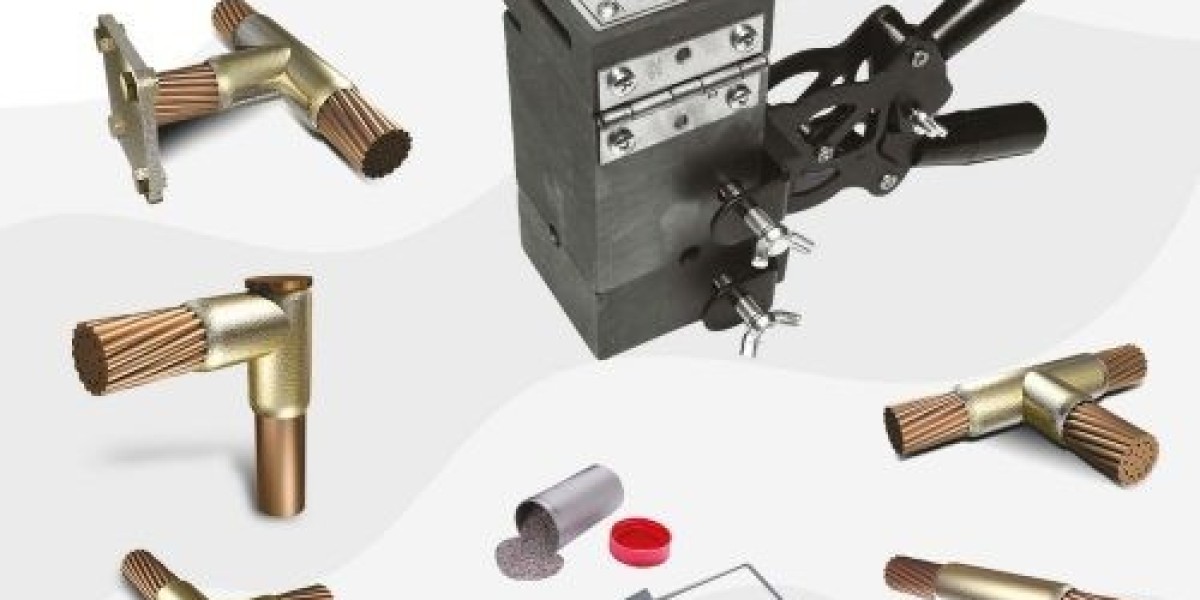Exothermic welding powder, also known as exothermic welding compound or thermite welding powder, is a specialized material used in electrical and grounding applications to create permanent, high-conductivity connections between metal conductors. In this comprehensive guide, we'll delve into the intricacies of exothermic welding powder, its composition, application methods, advantages, and considerations for optimal performance.
Composition of Exothermic Welding Powder:
Exothermic welding powder typically consists of a precise mixture of metallic components, oxidizing agents, and other additives carefully formulated to generate a controlled exothermic reaction when ignited. The primary constituents of exothermic welding powder include:
Metallic Components: Copper and aluminum are commonly used as the primary metallic components in exothermic welding powder. These metals provide the conductive material for the resulting weld and ensure compatibility with the conductors being joined.
Oxidizing Agents: Oxidizing agents such as iron oxide (Fe2O3) or aluminum oxide (Al2O3) serve to initiate and sustain the exothermic reaction by supplying oxygen atoms necessary for combustion.
Fluxes and Additives: Fluxes and other additives may be included in the powder formulation to improve fluidity, remove surface contaminants, and promote the formation of a clean, uniform weld.
Application Methods:
Exothermic welding powder is typically used to create permanent connections, or welds, between metal conductors, such as copper cables, grounding rods, and structural steel. The process involves several key steps:
Preparation: The surfaces of the conductors to be welded are cleaned and prepared to ensure good electrical contact and proper fusion of the metals.
Mold Assembly: A graphite or ceramic mold, known as a crucible, is assembled around the conductors, providing a containment vessel for the molten metal during the welding process.
Powder Placement: A calculated quantity of exothermic welding powder is poured into the mold cavity, surrounding the prepared conductor ends.
Ignition: A high-temperature ignition source, such as a magnesium strip or igniter cartridge, is applied to initiate the exothermic reaction within the powder.
Weld Formation: The exothermic reaction generates intense heat, melting the metal components within the powder and forming a molten pool that fuses the conductor ends together, creating a solid, electrically conductive connection.
Cooling and Removal: After the weld has solidified and cooled sufficiently, the mold assembly is removed, leaving behind a permanent, robust weld joint.
Advantages of Exothermic Welding Powder:
Exothermic welding powder offers several significant advantages over conventional welding methods and mechanical connectors:
Low Resistance: Exothermic welds exhibit low electrical resistance, ensuring efficient transmission of current and minimizing voltage drop across the connection.
Permanent Bond: The resulting weld joint is permanent, corrosion-resistant, and capable of withstanding high mechanical stress, vibration, and environmental factors.
High Conductivity: Exothermic welds provide high conductivity comparable to the base metals, maintaining electrical integrity and performance over time.
Versatility: Exothermic welding powder can be used to join a wide range of metals and conductor types, including copper, aluminum, steel, and copper-clad steel.
Ease of Installation: The exothermic welding process is relatively simple and does not require specialized equipment or extensive training, making it suitable for a wide range of applications and installation environments.
Considerations for Optimal Performance:
To ensure the successful application of exothermic welding powder, several factors should be considered:
Material Compatibility: Select the appropriate type and size of exothermic welding powder based on the materials being welded and the application requirements.
Proper Surface Preparation: Thoroughly clean and prepare the conductor surfaces to remove oxidation, dirt, grease, and other contaminants that could inhibit the welding process.
Safety Precautions: Exercise caution when handling and igniting exothermic welding powder, as the process involves high temperatures and molten metal. Follow recommended safety procedures and use appropriate personal protective equipment (PPE) to prevent injury.
Environmental Conditions: Consider environmental factors such as temperature, humidity, and wind conditions, which can affect the performance and outcome of the welding process.
Quality Assurance: Implement quality control measures to ensure the consistency and reliability of welds, including proper mixing and handling of the welding powder, adherence to recommended procedures, and inspection of finished weld joints.
Conclusion:
Exothermic welding powder is a versatile and effective solution for creating permanent, high-conductivity connections in electrical and grounding applications. By understanding its composition, application methods, advantages, and considerations for optimal performance, engineers, technicians, and installers can leverage the benefits of exothermic welding powder to achieve reliable and durable weld joints in a variety of settings. With its ability to produce robust connections that withstand the rigors of electrical and mechanical stress, exothermic welding powder remains a cornerstone of modern electrical infrastructure.








